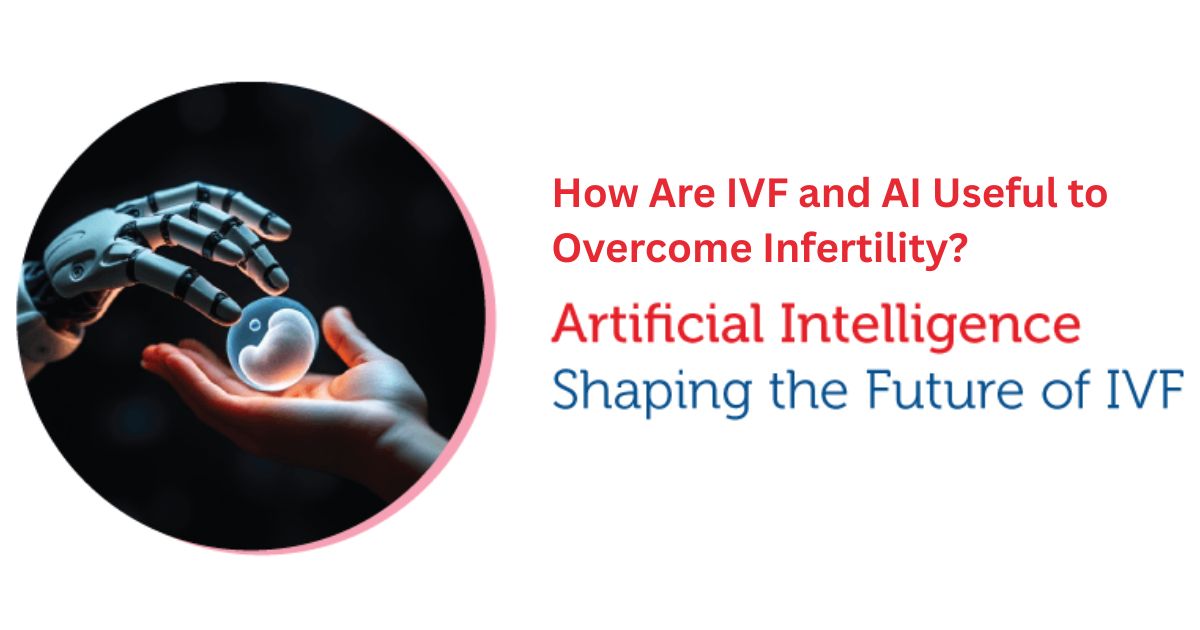Management is changing faster than ever - and AI isn’t just a tool anymore. It’s becoming a co-strategist, a predictive engine, and the new backbone of every high-performance team. If you're not using Management AI to streamline decisions, automate workflows, and enhance operations, your competitors already are.
This is the era where management and AI merge to create organizations that move faster, work smarter, and scale effortlessly. Let’s explore how you can use it to lead the future - not chase it.
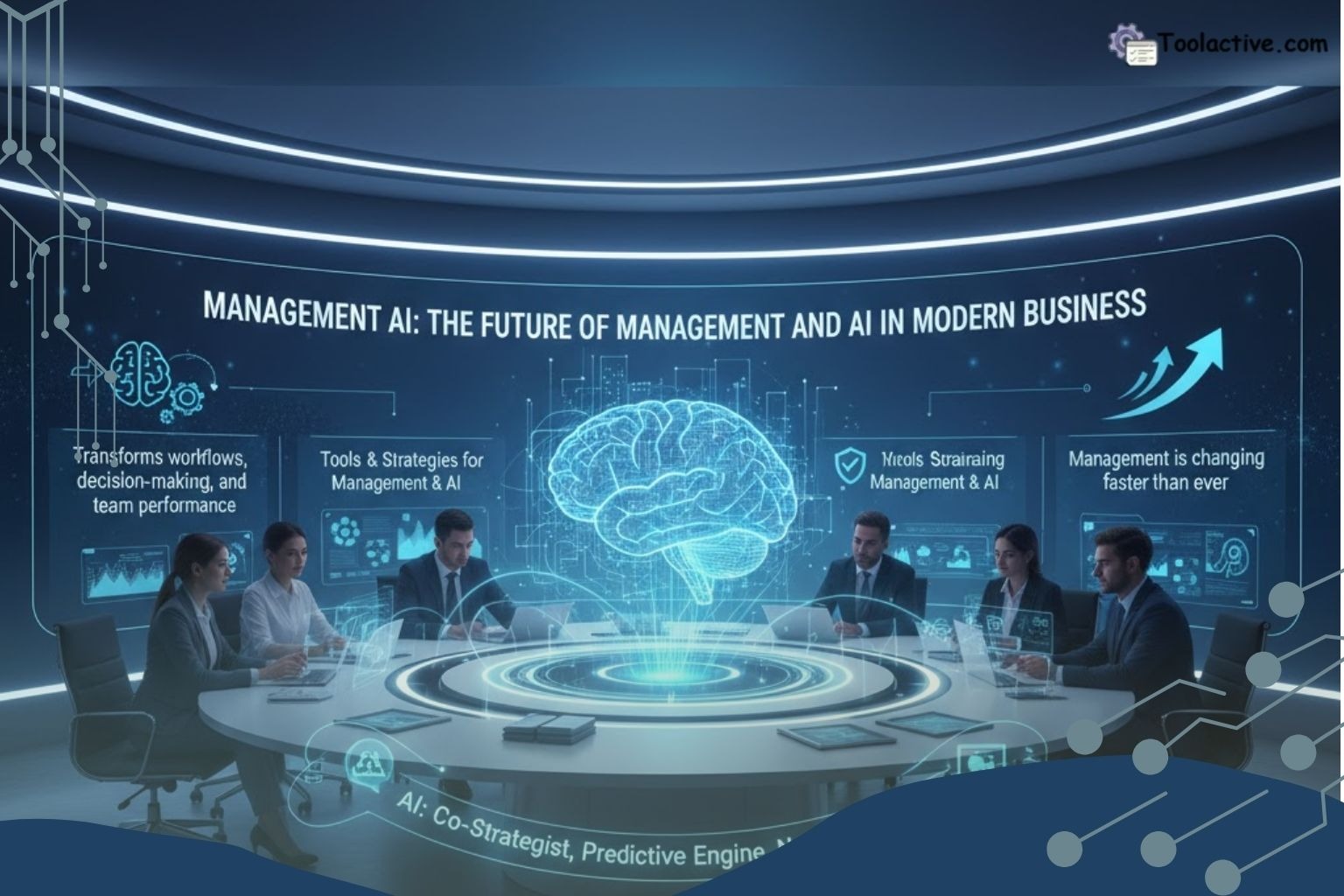
1. Introduction to Management AI
Management AI refers to the use of artificial intelligence systems, algorithms, and tools to optimize how organizations plan, organize, lead, and execute work. Instead of relying solely on human intuition or static dashboards, leaders can now access dynamic, real-time intelligence that identifies priorities, predicts outcomes, and eliminates inefficiencies across the entire business.
In 2025, Management AI is no longer a luxury - it’s a competitive necessity. Companies leveraging AI-driven management frameworks outperform traditional teams in productivity, collaboration, and decision quality. AI acts as a manager’s “second brain,” handling routine tasks while empowering humans to focus on creativity, leadership, and strategic innovation.
From scheduling and resource allocation to performance insights and predictive analytics, Management AI elevates every part of the modern business ecosystem. And as the technology evolves, its role only becomes more central.
2. The Evolution of Management and AI

The relationship between management and AI didn’t happen overnight. It evolved through several major phases:
Phase 1: Automation (Early 2010s)
Organizations adopted basic automation tools like workflow management, time tracking, and rule-based systems. The focus was efficiency.
Phase 2: Digital Transformation (2015–2020)
Cloud software replaced manual processes. Data became the foundation of strategic decisions.
Phase 3: Intelligence Era (2020–2025)
AI moved from simple automation to full-scale decision support. Tools like predictive analytics, natural language processing, and recommendation engines entered mainstream management.
Phase 4: The Age of AI-Driven Organizations (2025+)
Companies now run workflows with minimal human involvement. AI agents co-manage tasks, optimize processes, and forecast business outcomes with unprecedented accuracy.
Today, management and AI operate together not as separate systems, but as one unified operating model. This synergy is reshaping leadership principles, operational excellence, and business strategy.
3. Why “Management of AI” Matters Today
As AI becomes more powerful, so does the responsibility of managing it correctly. The management of AI involves the governance, oversight, ethical alignment, and operational monitoring of AI systems.
Key elements include:
AI Governance
Ensuring tools follow ethical standards, internal policies, and regional regulations.
Data Quality & Lifecycle Management
AI is only as good as the data it uses. Managing accuracy, cleanliness, and relevance is critical.
Risk & Error Management
Businesses must protect against AI bias, incorrect predictions, and hallucinations.
Monitoring AI Performance (Model Drift)
Even strong models degrade without continuous updates.
Human Oversight & Accountability
AI isn’t meant to replace decision-makers, but enhance them. Organizations must establish when human intervention is required.
Management of AI ensures that automation remains aligned with business goals and that leaders maintain full control over every intelligent system they deploy.
4. Key Challenges in Management and AI
While AI provides significant advantages, it also introduces new challenges for managers.
1. Skills Gap
Traditional leaders often lack knowledge in data analysis, AI operations, or digital strategy.
2. Over-Reliance on Technology
Leaders must avoid blindly trusting AI insights without proper validation.
3. Data Privacy & Security Risks
AI tools require large volumes of sensitive data, which must be protected from breaches.
4. Organizational Resistance
Employees may feel threatened by AI, leading to low adoption or internal friction.
5. Ethical Concerns
Bias, fairness, transparency, and compliance must be actively monitored.
6. Balancing Human Judgment with AI Insights
AI may offer predictions, but human interpretation remains essential for context.
Overcoming these challenges requires structured onboarding, strong leadership, and a modern AI-centric management model.
5. The Pillars of Effective Management AI
Management AI operates across several core pillars that transform how leaders work, plan, and optimize performance.
5.1 AI for Planning & Strategy
AI enhances strategic planning through:
-
Predictive analytics
-
Market behavior forecasting
-
Trend identification
-
Competitive intelligence
-
Demand prediction models
Managers can simulate future outcomes, evaluate risks, and make data-backed decisions with greater accuracy.
5.2 AI for People Management
AI assists HR and leadership teams by:
-
Analyzing performance patterns
-
Predicting employee burnout
-
Identifying skill gaps
-
Optimizing workforce allocation
AI also helps reduce bias and ensures fairer evaluation processes.
5.3 AI for Operations Management
Operational efficiency becomes easier with AI:
-
Automated task assignments
-
Workflow orchestration
-
Real-time issue detection
-
Supply chain optimization
-
Intelligent scheduling systems
AI minimizes bottlenecks and keeps teams moving at maximum efficiency.
5.4 AI for Decision-Making
AI-powered platforms assist with:
-
Scenario simulations
-
Large-scale data synthesis
-
Business recommendations
-
Risk analysis
With Management AI, decisions become faster, more accurate, and more aligned with organizational objectives.
6. Best Use Cases of Management AI in 2025
Management AI applies to nearly every department and function.
Project & Task Management
AI reorganizes tasks by urgency, workload, and deadlines.
Productivity Management
Systems detect inefficiencies and suggest improvements.
Customer Management (AI CRM)
AI analyzes customer behavior for better engagement strategies.
Financial & Budget Management
Predictive financial modeling helps avoid unnecessary expenses.
Team Collaboration
AI eliminates communication gaps with real-time insights and automation.
Risk & Compliance Automation
Tools monitor regulations, detect anomalies, and prevent legal issues.
Knowledge Management
AI builds centralized knowledge hubs and retrieves information instantly.
AI enhances every piece of the management ecosystem - making organizations faster, smarter, and more precise.
7. AI-Powered Project Management Tools
AI has transformed how managers run projects. Today’s platforms go beyond scheduling - they think for you.
Here are key categories:
1. Tools for Task Automation
Break down work, automate routine tasks, assign responsibilities.
2. Tools for Resource Management
Analyze workloads, avoid burnout, optimize team distribution.
3. Tools for Predictive Planning
Forecast deadlines, project risks, and resource shortages.
4. Tools for Complex Workflow Orchestration
Build multi-layered automations spanning multiple teams.
5. Tools for Collaboration & AI Insights
Improve communication, centralize data, generate meeting summaries.
Examples include:
Asana Intelligence, ClickUp AI, Notion AI, Monday AI, Motion, Wrike, Jira AI Assist, Linear, Airtable AI, Zoho AI Suite.
Each will be reviewed in detail in Section 8.
8. Top Management AI Tools in 2025
Here is an in-depth breakdown of the best management and AI tools, including features, strengths, limitations, and who they are ideal for.
1. Asana Intelligence

-
Predictive scheduling
-
Priority automation
-
AI task generation
-
Smart workflows
Ideal for large teams.
2. ClickUp AI

-
Document generation
-
Task prediction
-
AI-driven dashboards
Best for all-in-one management.
3. Notion AI
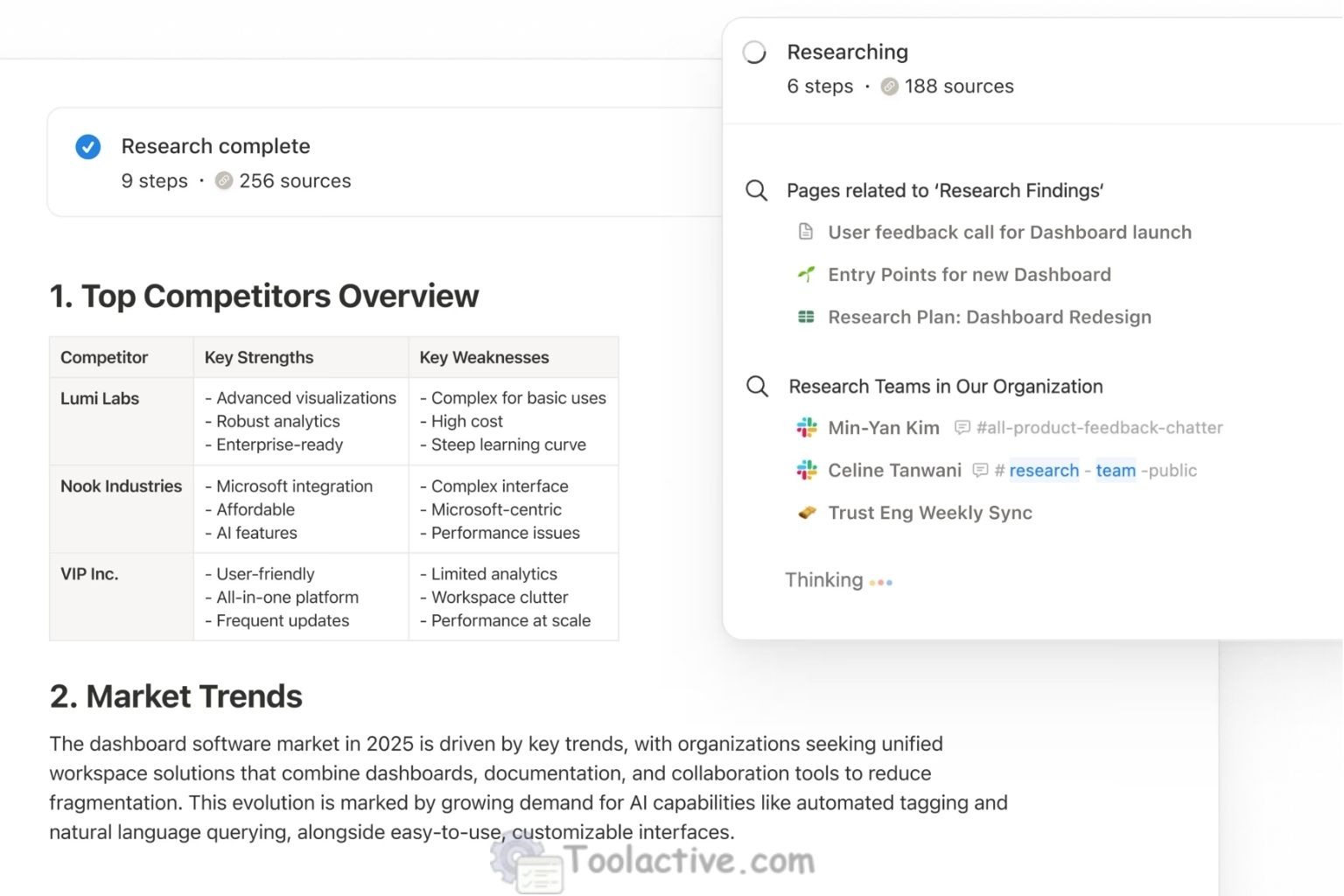
-
Knowledge management
-
AI project assistance
-
Documentation automation
Great for startups & SMEs.
4. Monday AI

-
AI task automation
-
Team workload analysis
-
Custom AI workflows
Perfect for complex teams.
5. Motion

-
Automatic daily planning
-
Calendar optimization
-
Predictive scheduling
Best for busy professionals.
6. Jira AI Assist
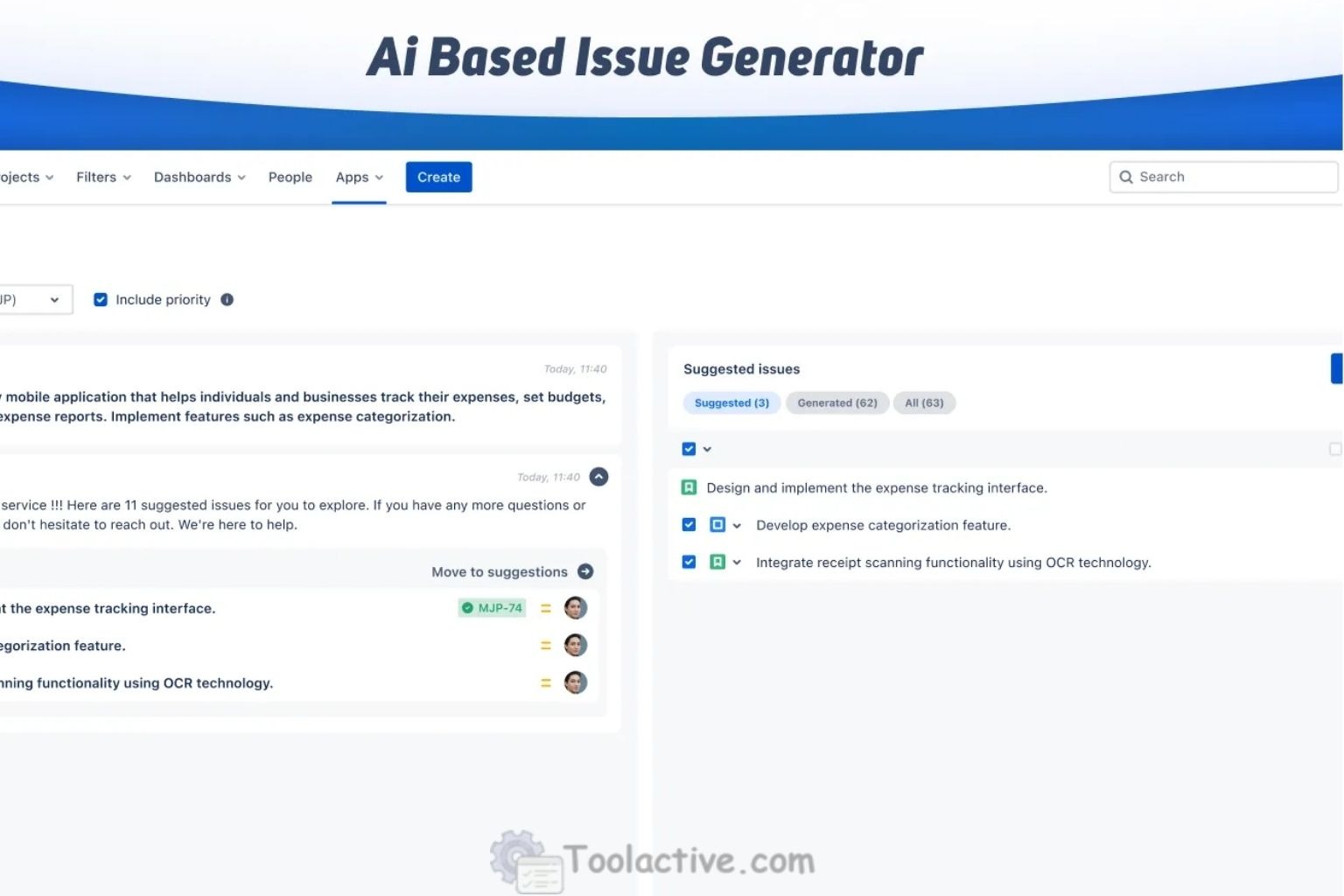
-
Developer-focused automation
-
Sprint predictions
-
Issue classification
Ideal for software teams.
7. Wrike AI
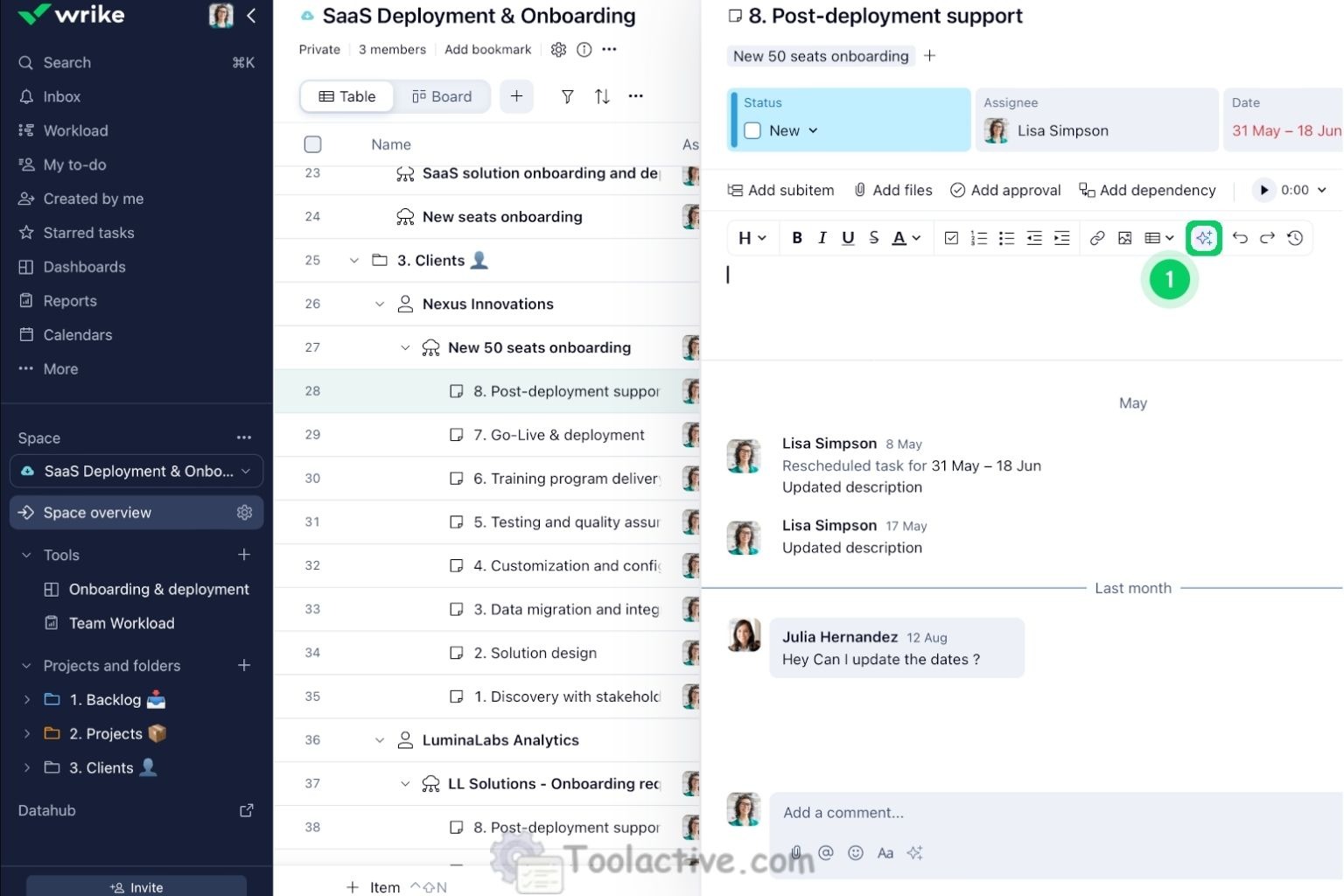
-
Intelligent planning
-
Risk analysis
-
AI recommendations
Enterprise-grade power.
9. AI for Executive & Leadership Management
AI isn’t just a tool for operations - it’s reshaping leadership.
Benefits for executives include:
-
High-level predictive analytics
-
Company-wide performance dashboards
-
Real-time profitability insights
-
AI risk detection
-
Strategic alignment suggestions
AI gives leaders an unprecedented advantage: clearer visibility, faster decision cycles, and deeper insights into every corner of the business.
10. Best AI Tools for OKR & Strategic Planning
When it comes to planning, aligning, and tracking organizational objectives, AI tools make strategic management faster, more accurate, and fully data-driven.
Top AI tools for OKR management:
Perdoo (AI-Enhanced OKR Alignment)
Perdoo uses AI recommendations to help teams define clearer objectives, align departments, identify stalled OKRs, and auto-generate progress insights. AI also predicts the likelihood of achieving each key result.
Weekdone (Goal Automation & Predictive Tracking)
Weekdone uses AI to transform weekly updates into performance summaries. It flags risks, identifies slow-moving objectives, and gives managers actionable insights.
Gtmhub (Enterprise OKR Intelligence)
Gtmhub connects thousands of data sources and uses AI to automatically track OKR progress. Predictive algorithms forecast OKR success and highlight critical issues before they escalate.
Why these tools matter:
AI doesn’t just track goals - it improves the quality of goal-setting itself. For teams struggling with alignment or execution, AI-driven OKR management removes guesswork and boosts organizational clarity.
11. Case Studies: How Companies Win with Management AI
Real-world examples make it clear: companies that adopt AI for management outperform those that don’t.
Case Study 1: A SaaS Startup Cut Project Delays by 38%
By integrating AI task forecasting and automated resource allocation, the company reduced bottlenecks and improved sprint planning reliability.
Case Study 2: A Retail Brand Improved Team Productivity by 52%
Using AI workflow automation and sentiment analysis, management identified stress indicators early and rebalanced workloads.
Case Study 3: A Global Marketing Agency Doubled Output in 6 Months
AI-powered collaboration, automated briefs, and real-time reporting enabled the agency to scale client work without hiring additional managers.
Case Study 4: A Healthcare System Reduced Administrative Overload
AI scheduling, automated reporting, and intelligent decision support allowed managers to focus more on patient outcomes instead of paperwork.
Conclusion:
Across industries, AI amplifies the impact of managers, accelerates workflows, and builds predictable, scalable systems.
12. Common Mistakes to Avoid When Using AI in Management
AI is powerful - but only when implemented correctly. Managers often fall into predictable traps:
Mistake 1: Expecting AI to Replace Decision-Making
AI supports decision-making, but human judgment remains essential. Over-reliance can lead to misinterpretation of context.
Mistake 2: Poor Data Quality
Bad data leads to inaccurate predictions. AI tools require clean, consistent, and correctly structured information.
Mistake 3: No Change Management Strategy
Teams need onboarding, training, and clarity about why AI is being adopted.
Mistake 4: Using Too Many Tools
When companies over-stack AI tools, data becomes fragmented and managers become overwhelmed.
Mistake 5: Ignoring Privacy & Ethical Considerations
AI must be transparent, responsible, and compliant with regulations like GDPR.
Avoiding these mistakes ensures smoother adoption and maximizes ROI.
13. How to Choose the Right AI Tool for Management
With hundreds of AI management platforms available, picking the right one requires a structured evaluation:
1. Identify Your Core Needs
- Project management?
- HR support?
- Planning and forecasting?
- Performance tracking?
2. Assess Integrations
The best tools integrate with Slack, Google Workspace, Asana, Notion, Jira, HubSpot, and other essentials.
3. Check the Strength of the AI Features
Does it offer:
✓ predictions?
✓ automation?
✓ insights?
✓ workflow creation?
✓ real-time analytics?
4. Consider Scalability
Can the tool handle 10 users today and 500 next year?
5. Evaluate Security & Compliance
Critical for enterprise teams and regulated industries.
6. Compare Pricing Models
Some tools charge per seat, others per project or feature set. Choose based on your growth plan.
A structured approach helps managers select a tool that truly enhances performance - not one that becomes another distraction.
14. The Future of Management AI (2025–2030 Predictions)
AI is evolving fast, and its impact on management will grow even more transformative.
Prediction 1: AI Becomes Each Manager’s Personal Chief of Staff
AI will summarize meetings, draft strategies, prepare analyses, and coordinate workflows automatically.
Prediction 2: Fully Automated Project Scheduling
AI will assign tasks, estimate timelines, and adjust schedules without human input.
Prediction 3: Emotionally Intelligent AI Assistants
Future management AI will detect tone, stress levels, motivation, and morale - helping managers prevent burnout.
Prediction 4: Autonomous Decision Systems
Organizations will adopt AI that makes routine decisions automatically, letting managers focus on creative and complex work.
Prediction 5: AI-Native Teams Become the Norm
Teams will include both humans and autonomous AI agents acting as project contributors.
Prediction 6: AI Will Predict Market Shifts Before They Happen
Managers will access early-warning insights about consumer trends, risks, and opportunities.
AI will not replace managers - it will enhance them into strategic leaders with superhuman capabilities.
15. Comparison Table: Top AI Management Tools
Below is a simplified comparison table (fully text-based):

This table provides readers with a fast, high-level snapshot of what to choose based on their needs.
16. FAQs About Management AI
1. What is Management AI?
Management AI refers to software and systems that use artificial intelligence to help managers plan, coordinate, communicate, and automate work.
2. Does AI replace managers?
No. AI enhances managers by automating busywork and providing intelligent insights - but humans remain essential for leadership, creativity, and decision-making.
3. Is Management AI hard to implement?
Most modern tools integrate easily with Slack, Notion, Jira, and other platforms. With proper onboarding, adoption is smooth.
4. Which industries benefit the most?
Every industry - tech, finance, healthcare, manufacturing, education, retail, and more - gains efficiency through AI management tools.
5. Is Management AI expensive?
Many tools offer free tiers. Paid plans vary widely, from affordable to enterprise-level pricing.
6. What skills do managers need for AI adoption?
Managers should understand data literacy, prompt writing, strategic thinking, and change management.
7. What risks should companies consider?
Data privacy, incorrect AI predictions, over-automation, and poor integration planning.
17. Conclusion: The New Era of Management Begins Now
Management AI is no longer optional - it’s the backbone of modern leadership. Whether you're overseeing teams, planning strategy, or running large-scale operations, AI-powered management tools help you work faster, smarter, and with unmatched clarity.
If you want to explore the best management AI tools and stay ahead of the future of work, start discovering curated solutions at Toolactive.com - your gateway to the next generation of AI-powered productivity.

.jpg)





.jpg)

